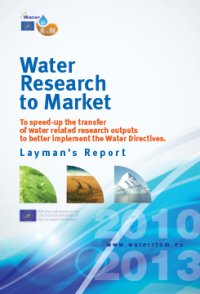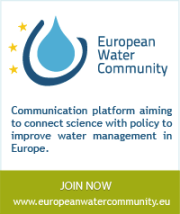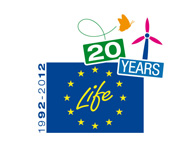MuSIASEM
| Output characterisation | |
| OUTPUT SENTENCE | MuSIASEM deals with complexity to assess sustainability of water use. |
| OUTPUT TYPE | methodology |
| WATER TOPIC | Scarcity and Droughts |
| KEYWORDS | • Integrated tool • Enables cooperation with other countries • Allows Comparability of case studies and approaches to water like different scientific fields. • Readiness for use; • Cover Market need |
| MARKET NEED TAILORED |
The need of connecting multiple scales of analysis involved in the assessment of the sustainability of water use. |
| OUTPUT DESCRIPTION |
MuSIASEM is an accounting methodology for the assessment of water use and its impacts able to deal with different perceptions about water and different spatial-temporal scales of analysis. It was created during the 90’s for the assessment of energy use and it is now adapted for water studies. |
| STATE OF DEVELOPMENT |
• Published in English, needs translation in Spanish |
| INNOVATIVE ASPECTS AND ADVANTAGES |
The main innovations are: |
| INTELLECTUAL/INDUSTRIAL PROPERTY RIGHTS |
• Does not have a patent, it is free for use, but costly to learn. Needs support from the group. |
| TRANSFERABILITY |
MuSIASEM: |
| POTENTIAL USERS/CLIENTS |
• River basin agencies |
| BUSINNESS CASE | Yes |
| Estimation of risks | |
| INNOVATIVE DISADVANTAGE |
• Lower appropriateness for end-users due to heavy theoretical background |
| EVALUATION OF RISKS FOR OUTPUT USERS | Its implementation has no risk for users, the risk are more related to the development of the methodology itself. |
| ECONOMICAL RISKS | • Positive: Reduces the risk of failure in assessments for incommensurability of monetary and water indicators. It allows stronger and more coherent economic assessments of the viability of water use. |
| TECHNICAL RISKS | No technical risk |
| MARKET RISKS | • Risk of misinterpretation if the theoretical background is not properly understood. The support of an expert in MuSIASEM would be advised. • Risk of misunderstanding the innovations of the methodology. Sometimes experts in different fields should advise the interpretation of results. |
| SOCIAL RISKS | • Results might not be politically correct. • Local knowledge is required for all analyses. • Development at risk due to lack of stable jobs in research at the moment |
| Steps ahead | |
| NEXT STEPS TO ACHIEVE THE STATUS 'READY TO USE' |
For the autonomy of end users, it would be needed to create an internet interface where users do not have to deal with theoretical issues. |
| TYPE OF PARTNER FOR THE NEXT DEVELOPMENTS | SME/Company to serve as case studies SME/Company to support the creation of internet platform Research organisations (specialists in Ecology assessments mainly) River basin authorities, other public planners (to support improvement of the DSS stage) |
| TASKS TO BE PERFORMED |
• Reach the status of “ready to use” in theoretical background for nexus |
| COLLABORATION DETAILS | Financing, Research co-operation, technical support. |
| Estimation of ressources | |
| RESOURCES FOR NEXT STEPS |
• Human resources needed: Experienced researcher for a couple of years (Marie Curie or similar), Programmer and GIS technicians for about a year. Early stage researchers willing to assess case studies for a year or two. |
| FORESEEN COSTS FOR NEXT STEPS |
• Human Resources: About 400.000€ |
| Contact | |
| TECHNICAL CONTACT | Cristina Madrid López - Autonomous University of Barcelona, Institute of Environmental Science and Technology (ICTA). |
| COUNTRY | SPAIN |
| WEBSITE | http://societalmetabolism.org/?page_id=11 |
| Background | |
| PROJECT NAME | MultiScale Integrated Assessment of Societal and Ecosystem Metabolism |
| PROJECT ACRONYM | MuSIASEM |
| PROJECT DESCRIPTION | MuSIASEM is an accounting methodology for the assessment of water use and its impacts able to deal with different perceptions about water and different spatial-temporal scales of analysis. It was created during the 90’s for the assessment of energy use and it is now adapted for water studies. |
| LEADER | Autonomous University of Barcelona. Institute of Environmental Science and Technology. |
| TEAMS INVOLVED | IASTE: Integrated Assessment: Society, Technology and the Environment |
| COUNTRIES INVOLVED | SPAIN |
| PROJECT LOCATION | Urban: Lima (Perú), Cuenca (Ecuador). River Basin: Andarax. Economy: Spain, Mauritius, South Africa, Punjab (India). |
| FUNDING ORGANISATION | ICREA and SGR program, Catalan Government. The methodology has been developed in a number of EU-funded and Spain-funded projects |




